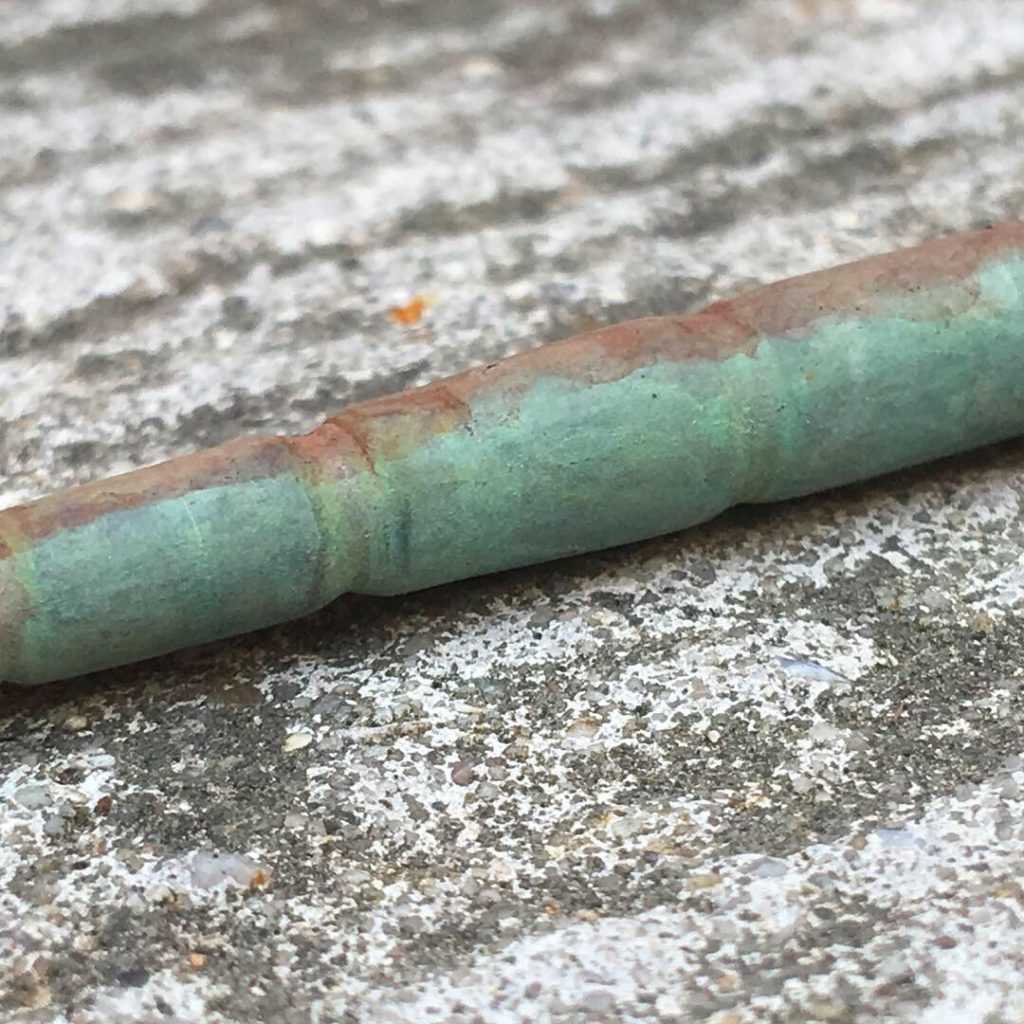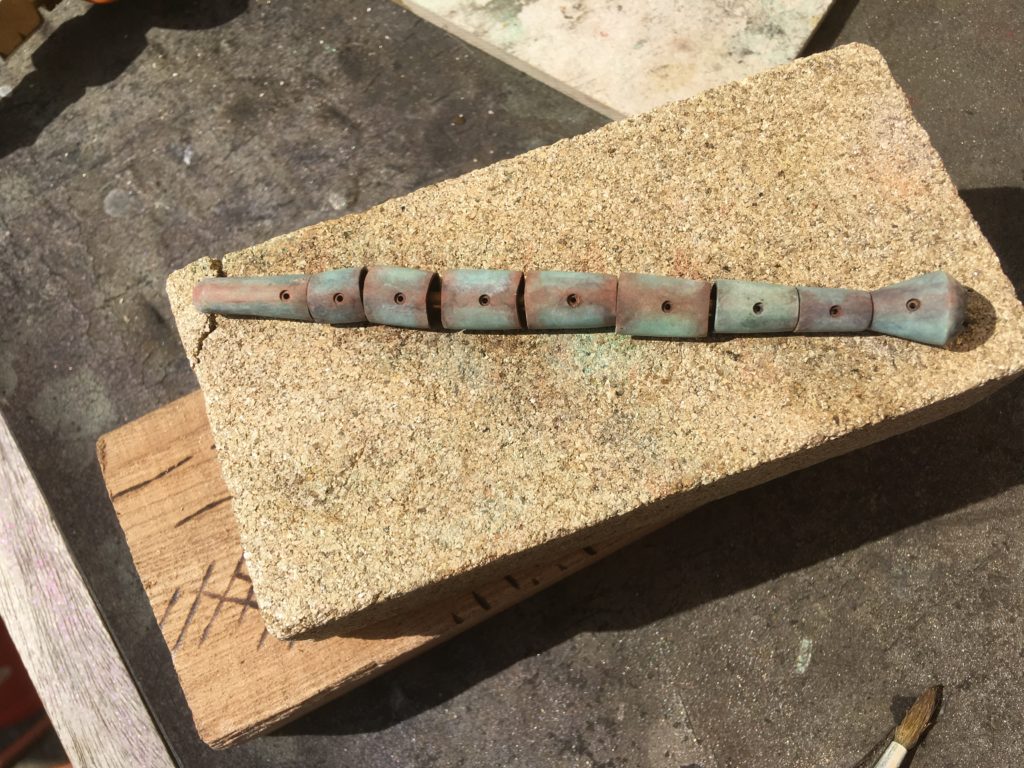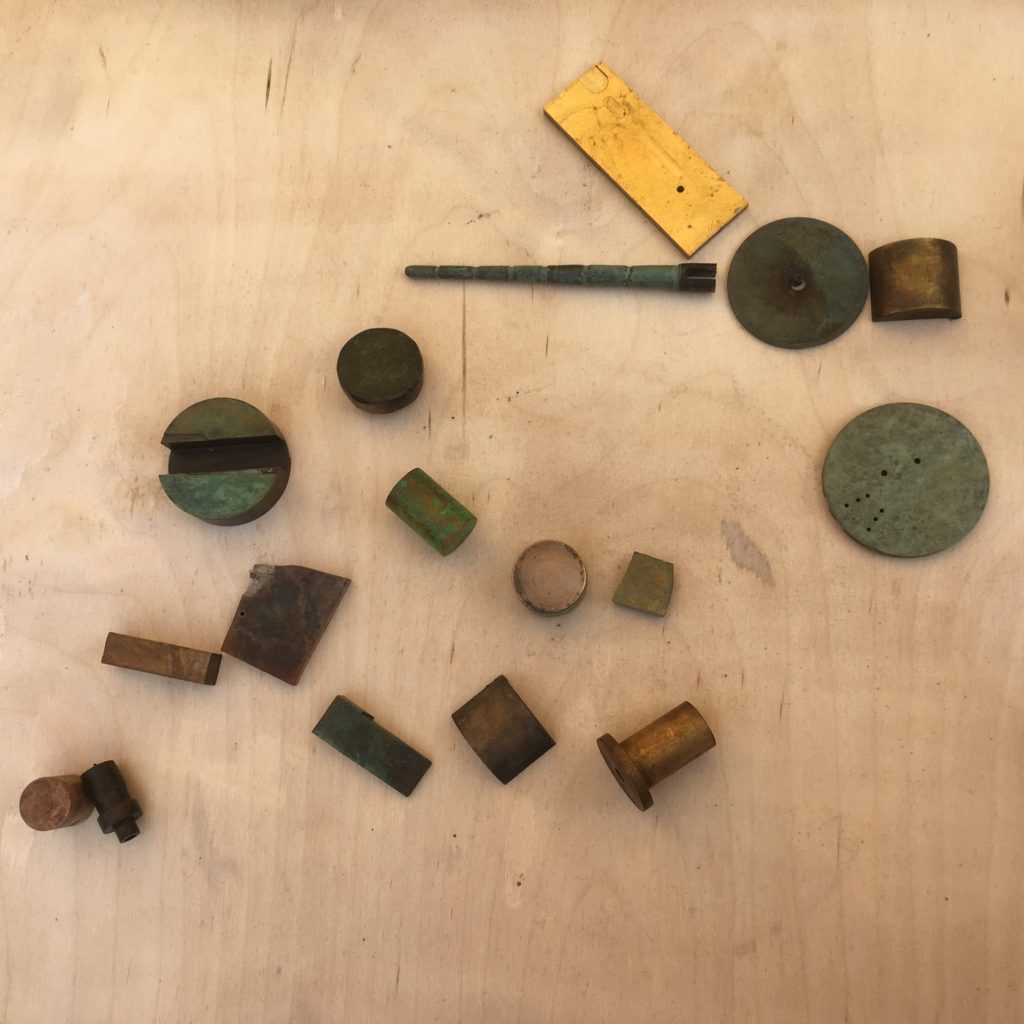
Colouring the abdomen of the dragonfly. The idea for the colouring of the dragonfly was to strike a balance of somewhere between the living and the dead, the suggestion of the ceramic like quality of the preserved specimin and the electric blue brightness from the living. The suggestion and expression of this to me was important as this is is what we percieve when we see a dragonfly in movement, not the intricate detail that it is it’s design.
The emporer dragonfly from the natural history museum specimin
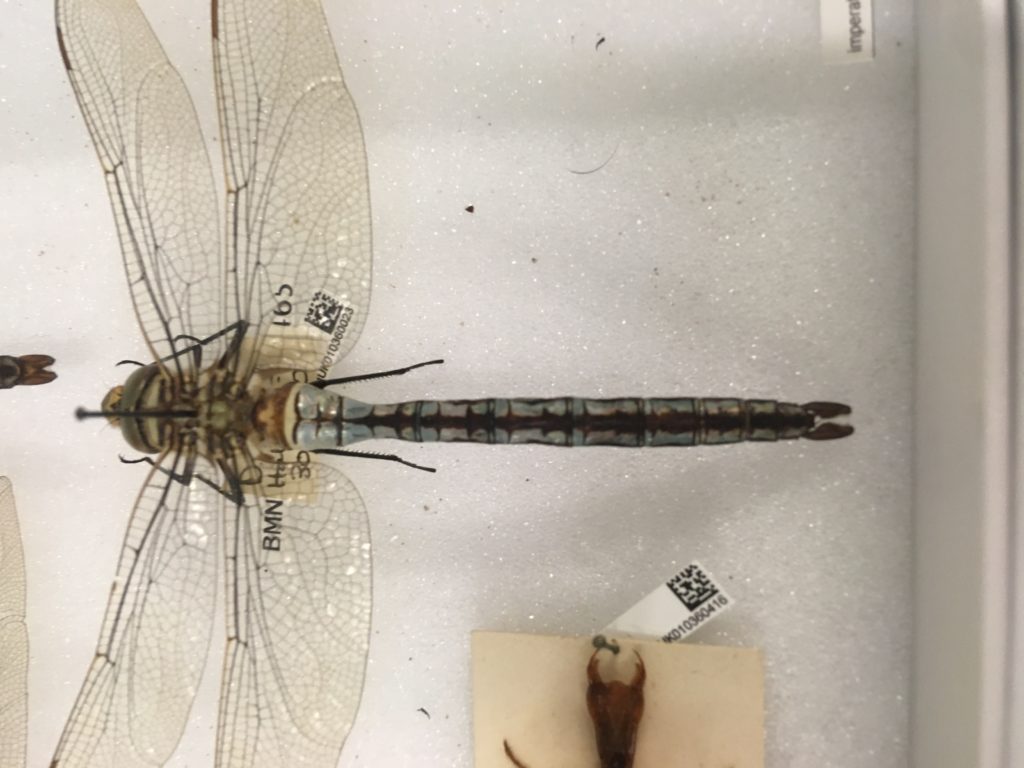
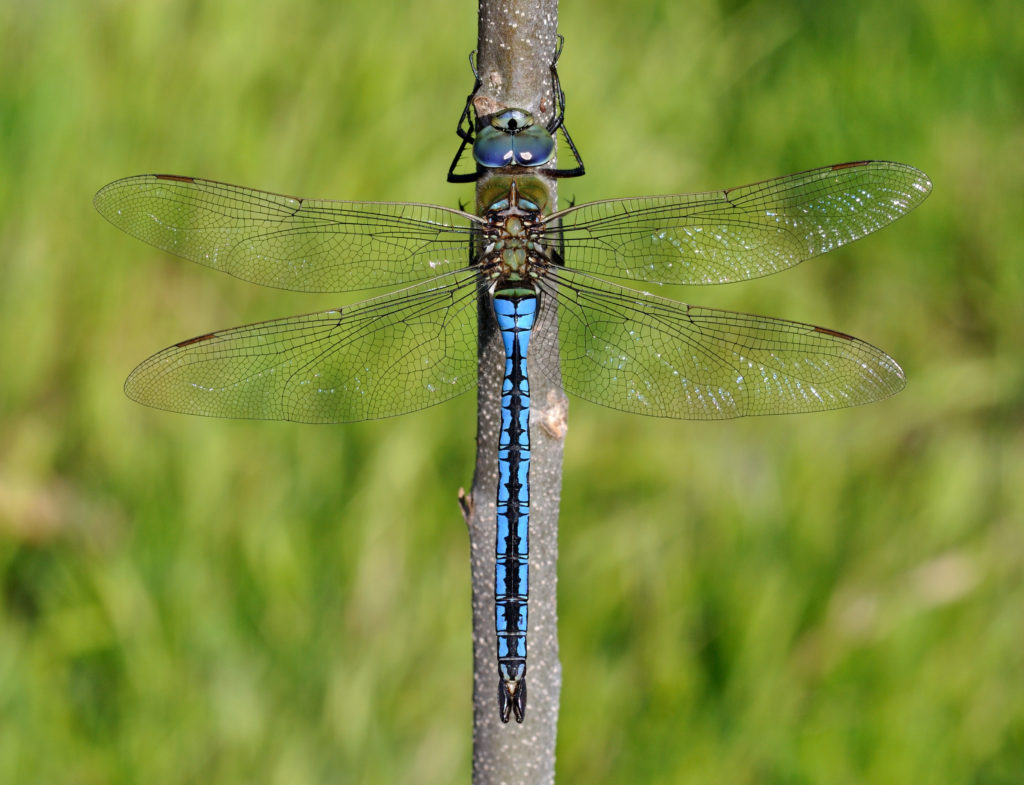
Sampling process:
To acheive various blues, I sampled various methods to see what would be the most appropriate for the object, taking into consideration its size and the limitations of using each chemical.
Ammonia fume:
Below are images of samples, created using an ammonia fuming process.
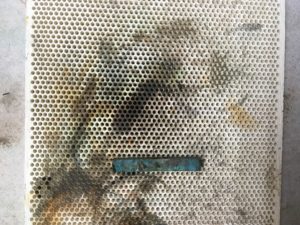
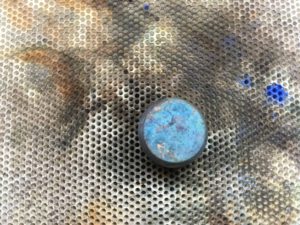
This involves placing the object in an air tight container and exposing it to fumes of ammonia without the ammonia touching the object. This is a method used commonly in jewelery making for smaller objects. The nature of ammonia is quite wild and untamable, it can be used over a base patina, therefore very difficult to control especially with brass. The colour blue that is achieved is extremely vibrant, and very similar to that of the living dragonfly. However the way it reacted with the brass is quite abrasive and can continue reacting and eating into the metal after the patination has occured and can be quite unstable even after fixing. The peices of abdomen were reasonably delicate and fine and I preffered to chose a method of blueing that allowed more control. A classic cupric nitrate solution, used to create vedigris and commonly seen on bronze statues and copper roofs.
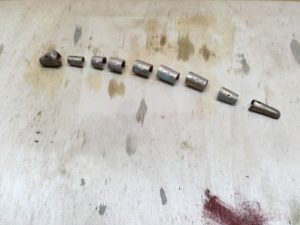
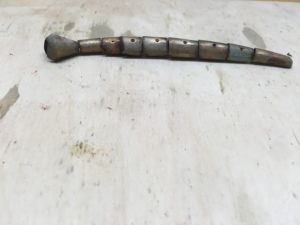
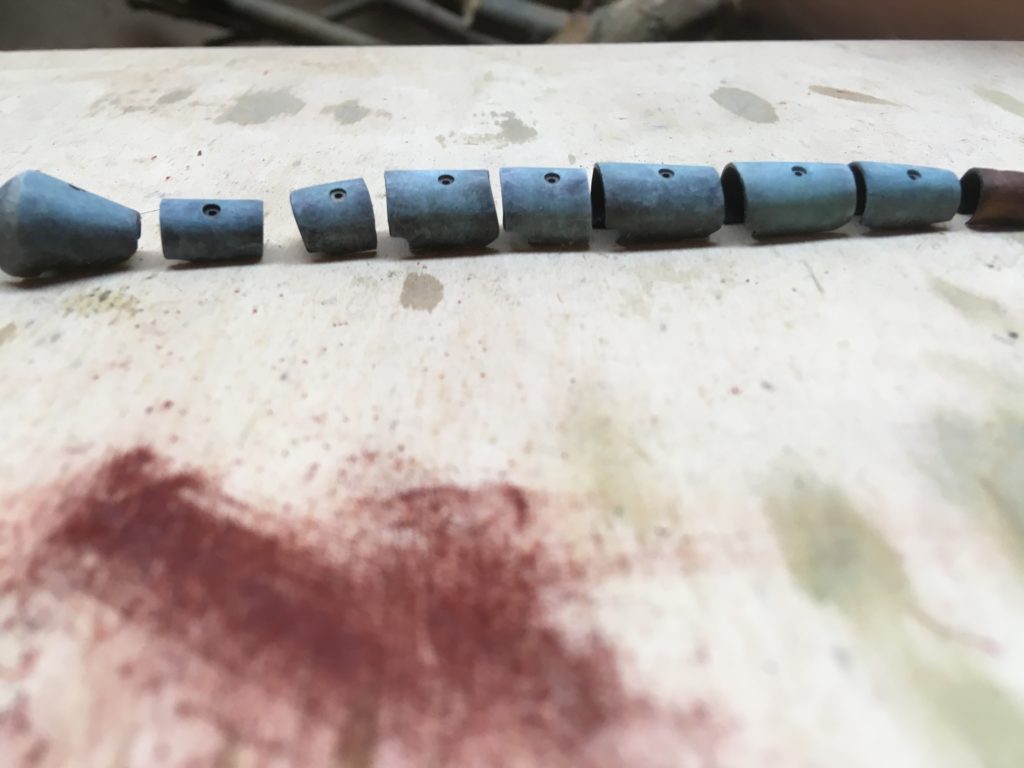
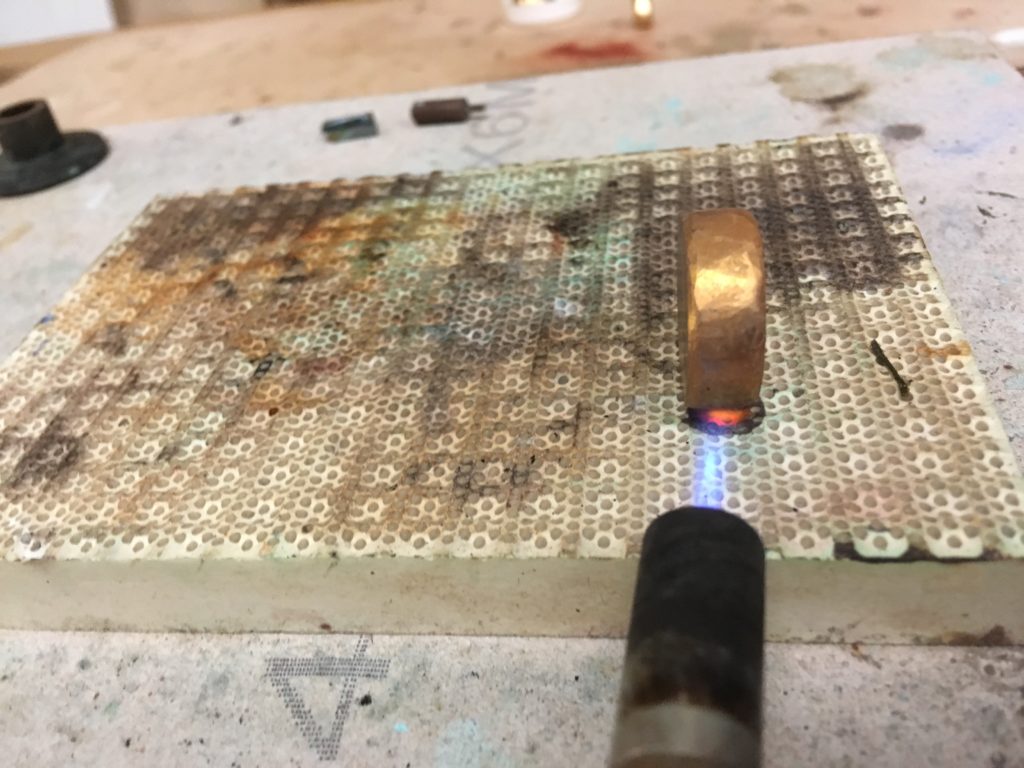
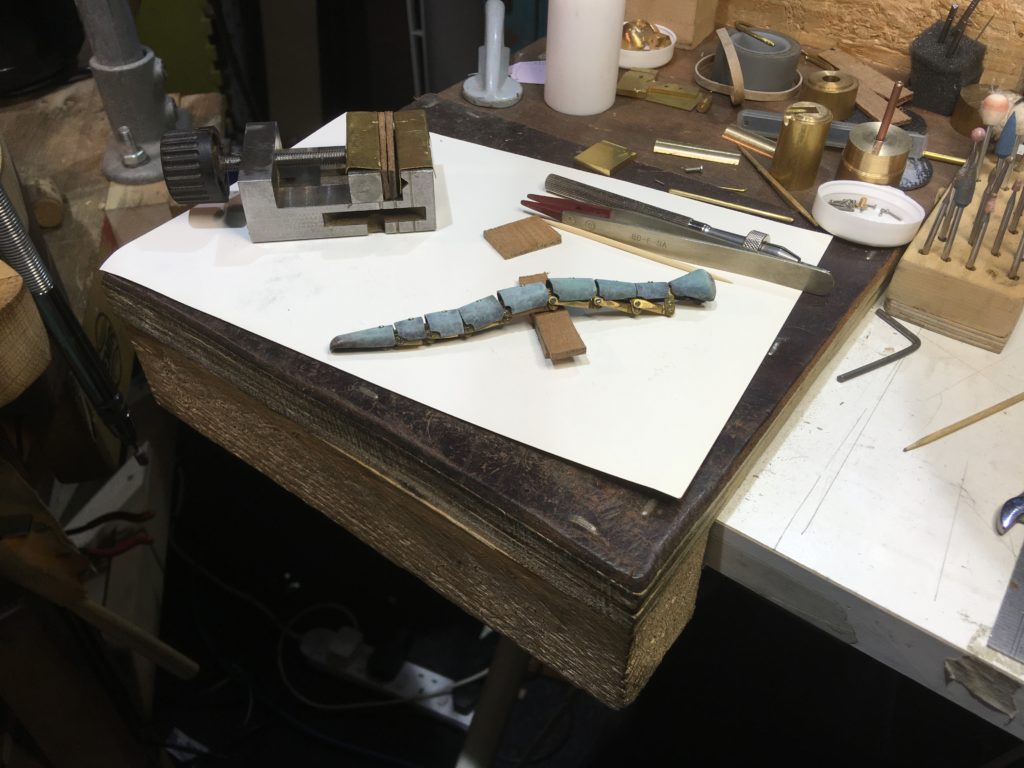
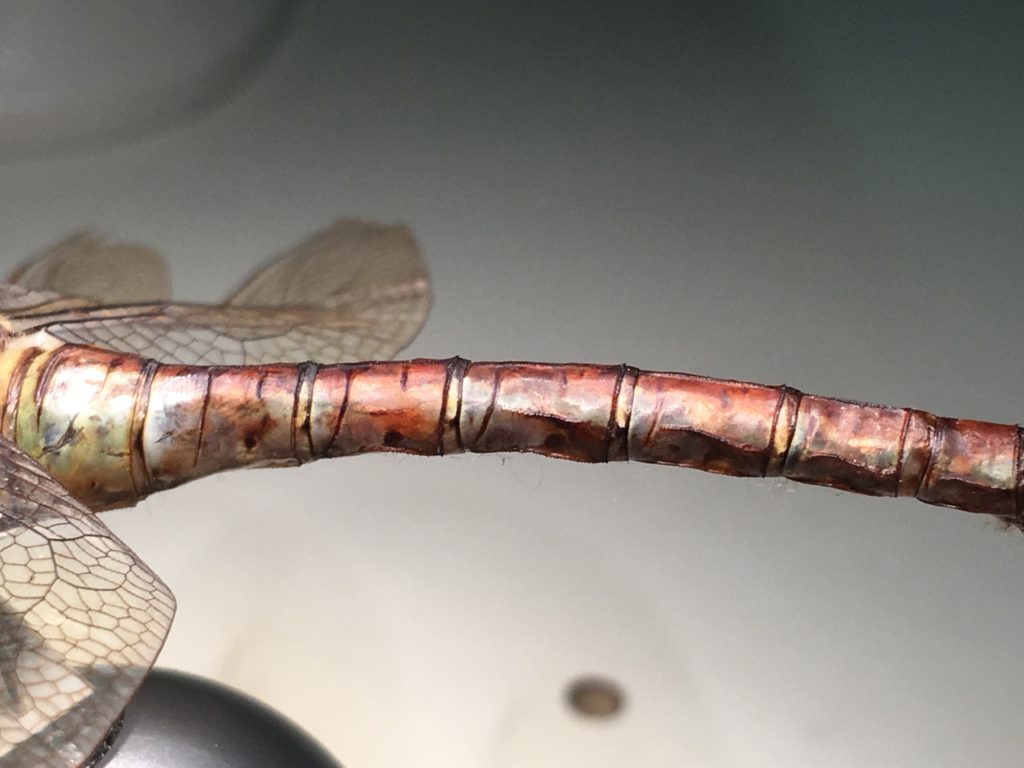
The next step was to add the red, iron like colour that can be seen in the specimen, and is in the dark markings that flow down the centre of the abdomen. Combining colours with patination can be difficult, I tested a few samples. Using Potassium Hexocynoferrate (a chemical used in photography, and in detecting iron) This reacted with the copper base to produce a purpleish red, and had an effect similar to a water colour. However once again controlling this was very difficult, and it can be dangerous to mix acids with the potassium. Therefore I also used some iron oxide pigment to enhance the red colour.
